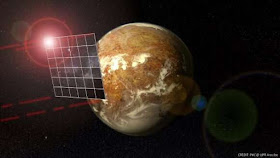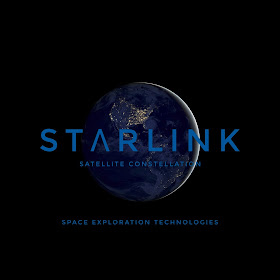NASA & ESA - Hubble Space Telescope 30th Anniversary patch.
April 24, 2020
Claude Nicollier biography:
Claude Nicollier (born 2 September 1944 in Vevey, Switzerland) is the first astronaut from Switzerland. He has flown on four Space Shuttle missions. His first spaceflight (STS-46) was in 1992, and his final spaceflight (STS-103) was in 1999. He took part in two servicing missions to the Hubble Space Telescope (called STS-61 and STS-103). During his final spaceflight he participated in a spacewalk, becoming the first European Space Agency astronaut to do so during a Space Shuttle mission (previous ESA astronauts conducted spacewalks aboard Mir, see List of spacewalks and moonwalks 1965–1999). In 2000 he was assigned to the Astronaut Office Extravehicular Activity Branch, while maintaining a position as Lead ESA Astronaut in Houston. Nicollier retired from ESA in April 2007. He was appointed full professor of Spatial Technology at the École Polytechnique Fédérale de Lausanne (EPFL) on 28 March 2007.
Astronaut Claude Nicollier
Hubble problem - Flawed mirror
Within weeks of the launch of the telescope, the returned images indicated a serious problem with the optical system. Although the first images appeared to be sharper than those of ground-based telescopes, Hubble failed to achieve a final sharp focus and the best image quality obtained was drastically lower than expected. Images of point sources spread out over a radius of more than one arcsecond, instead of having a point spread function (PSF) concentrated within a circle 0.1 arcseconds (485 nrad) in diameter, as had been specified in the design criteria.
Image above: An extract from a WF/PC image shows the light from a star spread over a wide area instead of being concentrated on a few pixels.
Analysis of the flawed images revealed that the primary mirror had been polished to the wrong shape. Although it was believed to be one of the most precisely figured optical mirrors ever made, smooth to about 10 nanometers, the outer perimeter was too flat by about 2200 nanometers. This difference was catastrophic, introducing severe spherical aberration, a flaw in which light reflecting off the edge of a mirror focuses on a different point from the light reflecting off its center.
Hubble being deployed from Discovery in 1990
The effect of the mirror flaw on scientific observations depended on the particular observation—the core of the aberrated PSF was sharp enough to permit high-resolution observations of bright objects, and spectroscopy of point sources was affected only through a sensitivity loss. However, the loss of light to the large, out-of-focus halo severely reduced the usefulness of the telescope for faint objects or high-contrast imaging. This meant nearly all the cosmological programs were essentially impossible, since they required observation of exceptionally faint objects. NASA and the telescope became the butt of many jokes, and the project was popularly regarded as a white elephant. For instance, in the 1991 comedy The Naked Gun 2½: The Smell of Fear, in a scene where high-profile disasters were displayed, Hubble was pictured with Lusitania, the Hindenburg, and the Edsel. Nonetheless, during the first three years of the Hubble mission, before the optical corrections, the telescope still carried out a large number of productive observations of less demanding targets. The error was well characterized and stable, enabling astronomers to partially compensate for the defective mirror by using sophisticated image processing techniques such as deconvolution.

Hubble Space Telescope (HST)
Origin of the problem
A commission headed by Lew Allen, director of the Jet Propulsion Laboratory, was established to determine how the error could have arisen. The Allen Commission found that a reflective null corrector, a testing device used to achieve a properly shaped non-spherical mirror, had been incorrectly assembled—one lens was out of position by 1.3 mm (0.051 in). During the initial grinding and polishing of the mirror, Perkin-Elmer analyzed its surface with two conventional refractive null correctors. However, for the final manufacturing step (figuring), they switched to the custom-built reflective null corrector, designed explicitly to meet very strict tolerances. The incorrect assembly of this device resulted in the mirror being ground very precisely but to the wrong shape. A few final tests, using the conventional null correctors, correctly reported spherical aberration. But these results were dismissed, thus missing the opportunity to catch the error, because the reflective null corrector was considered more accurate.

Image above: Optical evolution of Hubble's primary camera system. These images show spiral galaxy M100 as seen with WFPC1 in 1993 before corrective optics (left), with WFPC2 in 1994 after correction (center), and with WFC3 in 2018 (right).
The commission blamed the failings primarily on Perkin-Elmer. Relations between NASA and the optics company had been severely strained during the telescope construction, due to frequent schedule slippage and cost overruns. NASA found that Perkin-Elmer did not review or supervise the mirror construction adequately, did not assign its best optical scientists to the project (as it had for the prototype), and in particular did not involve the optical designers in the construction and verification of the mirror. While the commission heavily criticized Perkin-Elmer for these managerial failings, NASA was also criticized for not picking up on the quality control shortcomings, such as relying totally on test results from a single instrument.
Exploded view of the Hubble Space Telescope
Servicing missions and new instruments
Hubble was designed to accommodate regular servicing and equipment upgrades while in orbit. Instruments and limited life items were designed as orbital replacement units. Five servicing missions (SM 1, 2, 3A, 3B, and 4) were flown by NASA space shuttles, the first in December 1993 and the last in May 2009. Servicing missions were delicate operations that began with maneuvering to intercept the telescope in orbit and carefully retrieving it with the shuttle's mechanical arm. The necessary work was then carried out in multiple tethered spacewalks over a period of four to five days. After a visual inspection of the telescope, astronauts conducted repairs, replaced failed or degraded components, upgraded equipment, and installed new instruments. Once work was completed, the telescope was redeployed, typically after boosting to a higher orbit to address the orbital decay caused by atmospheric drag.
Hubble servicing missions planning
Servicing Mission 1 (STS-61):
After the problems with Hubble's mirror were discovered, the first servicing mission assumed greater importance, as the astronauts would need to do extensive work to install corrective optics. The seven astronauts for the mission were trained to use about a hundred specialized tools. SM1 flew aboard Endeavour in December 1993, and involved installation of several instruments and other equipment over ten days.
Most importantly, the High Speed Photometer was replaced with the COSTAR corrective optics package, and WFPC was replaced with the Wide Field and Planetary Camera 2 (WFPC2) with an internal optical correction system. The solar arrays and their drive electronics were also replaced, as well as four gyroscopes in the telescope pointing system, two electrical control units and other electrical components, and two magnetometers. The onboard computers were upgraded with added coprocessors, and Hubble's orbit was boosted.
Astronauts Musgrave and Hoffman install corrective optics during SM1
For Claude Nicollier was his second spaceflight was as a Mission Specialist on the 10-day mission aboard Endeavour, called STS-61, in 1993. It was the first mission to service the Hubble Space Telescope, which had been launched three years previously.
On January 13, 1994, NASA declared the mission a complete success and showed the first sharper images. The mission was one of the most complex performed up until that date, involving five long extra-vehicular activity periods. Its success was a boon for NASA, as well as for the astronomers who now had a more capable space telescope.
Servicing Mission 2 (STS-82):
(Without C. Nicollier)
Hubble as seen from Discovery during its second servicing mission
Servicing Mission 2, flown by Discovery in February 1997, replaced the GHRS and the FOS with the Space Telescope Imaging Spectrograph (STIS) and the Near Infrared Camera and Multi-Object Spectrometer (NICMOS), replaced an Engineering and Science Tape Recorder with a new Solid State Recorder, and repaired thermal insulation. NICMOS contained a heat sink of solid nitrogen to reduce the thermal noise from the instrument, but shortly after it was installed, an unexpected thermal expansion resulted in part of the heat sink coming into contact with an optical baffle. This led to an increased warming rate for the instrument and reduced its original expected lifetime of 4.5 years to about two years.
Servicing Mission 3A (STS-103):
Servicing Mission 3A, flown by Discovery, took place in December 1999, and was a split-off from Servicing Mission 3 after three of the six onboard gyroscopes had failed. The fourth failed a few weeks before the mission, rendering the telescope incapable of performing scientific observations. The mission replaced all six gyroscopes, replaced a Fine Guidance Sensor and the computer, installed a Voltage/temperature Improvement Kit (VIK) to prevent battery overcharging, and replaced thermal insulation blankets.
Claude Nicollier repairing Hubble
In this picture, ESA astronaut Claude Nicollier, part of Hubble Servicing Mission 3A, is working with a power screwdriver during his spacewalk with NASA astronaut Micheal Foale, installing a camera and upgrading the main computer.
Working in the weightless vacuum of space, it is not surprising that things do not always go to plan but the resourcefulness of the international team on Earth and the astronauts overcame most problems. Claude had trouble installing the camera because there was more friction than expected. He eventually found a different way to slot the computer in place but the operation took an hour longer than planned.
For Claude Nicollier was his final spaceflight was an 8-day mission aboard Space Shuttle Discovery, called STS-103, in 1999. It was the third servicing mission to the Hubble Space Telescope. During this mission Nicollier participated in an 8-hour spacewalk; it was his first, and the first of any ESA astronaut during a Space Shuttle mission.
Servicing Mission 4 (STS-125):
(Without C. Nicollier)
Hubble during Servicing Mission 4
Servicing Mission 4 (SM4), flown by Atlantis in May 2009, was the last scheduled shuttle mission for HST. SM4 installed the replacement data-handling unit, repaired the ACS and STIS systems, installed improved nickel hydrogen batteries, and replaced other components. SM4 also installed two new observation instruments—Wide Field Camera 3 (WFC3) and the Cosmic Origins Spectrograph (COS)—and the Soft Capture and Rendezvous System, which will enable the future rendezvous, capture, and safe disposal of Hubble by either a crewed or robotic mission. Except for the ACS's High Resolution Channel, which could not be repaired and was disabled, the work accomplished during SM4 rendered the telescope fully functional, and it remains so as of 2020.
Related links:
About - Hubble Servicing Missions:
https://www.nasa.gov/mission_pages/hubble/servicing/index.html
NASA Hubblesite Servicing Missions:
https://hubblesite.org/mission-and-telescope/servicing-missions
For more information about Hubble, visit:
http://hubblesite.org/
http://www.nasa.gov/hubble
http://www.spacetelescope.org/
Images, Animation, Text, Credits: NASA/ESA/Hubble/Wikipedia/Orbiter.ch Aerospace/Roland Berga.
Best regards, Orbiter.ch














































